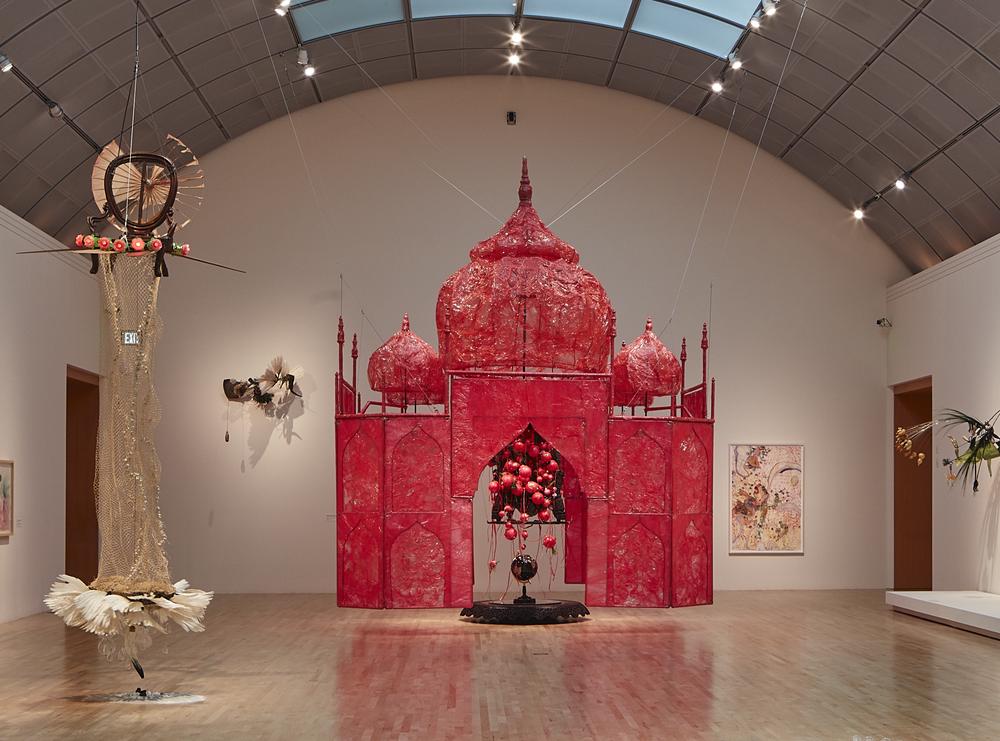Rina Banerjee. The Exotic, Lavish, and Kitschy

Rina Banerjee’s plastic interpretation of India’s Taj Mahal is an ode to travel and fantasy. Built in the early seventeenth century by Mughal emperor Shah Jahan as a mausoleum for his beloved wife, Mumtaz Mahal, the white marble Taj Mahal is an icon of Indo-Islamic architecture and widely considered a monument to romantic love. Banerjee’s bright pink Take me, take me, take me . . . to the Palace of love (2003), constructed with plastic Saran wrap, is an excessively sentimental and kitschy representation of India that revolves around a critique of the colonial gaze and the ongoing exoticism perpetrated by the tourist economy. Further, its color and ornamentation represent the complex ritual of marriage—both a marker of love and an exchange of value, like money and power.1 Banerjee used the color pink for its theatricality; as the artist described, the color “can make one feel vulnerable, luxurious, sentimental, nostalgic, tender, comical, sudden, centered, or even, idealistic.” But there’s a darker side too that speaks to “repression, oppression, submission, omission, struggle, cruelty, the abject, and the inhumanity of amusement.”2
Rachel Kent, “Rina Banerjee: The Global Traveler,” in Rina Banerjee: Make Me a Summary of the World, ed. Jodi Throckmorton (Philadelphia: Pennsylvania Academy of the Fine Arts; and San José, CA: San José Museum of Art, 2018), 90. ↩︎
Rina Banerjee, in interview with Courtney J. Martin, in Wild Things (Brandts, Denmark: Kunsthallen Brandts, 2010), 28. ↩︎